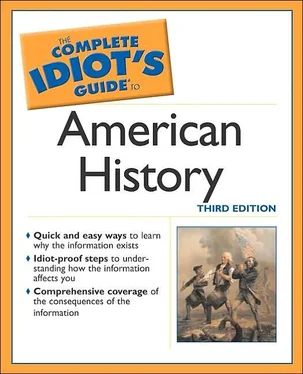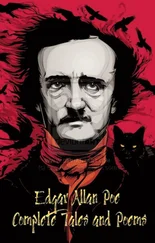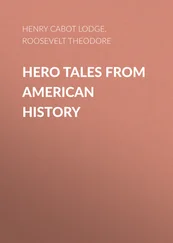The Shot Heard ’Round the World
Massachusetts responded to the Parliamentary declaration by organizing special militia units that could be ready for battle on a minute’s notice. They were called the Minutemen.
General Thomas Gage, commander of British regulars, ordered to use force against the defiant colonials, dispatched Lieutenant Colonel Francis Smith with a column from Boston to seize the gunpowder stored at the Massachusetts Provincial Congress in the town of Concord. On the morning of April 19, 1775, Smith’s troops dispersed a company of Minutemen at Lexington, unintentionally killing several in an unauthorized burst of musket fire. Smith reached Concord but found only a small portion of the gunpowder. He had not reckoned with the resourcefulness of a small band of swift riders.
Paul Revere (1735-1818) was a prosperous and highly skilled Charlestown, Massachusetts, silversmith, who was a leader of the Sons of Liberty and had been a participant in the Boston Tea Party. A courier for the Massachusetts Committee of Correspondence, Revere rode, on the night of April 18, from Charlestown to Lexington, alerting the populace to the approach of British troops. In Lexington, he also warned John Hancock and Samuel Adams, the chief leaders of the Massachusetts rebels, to escape. Accompanied by two other riders, Charles Dawes and Samuel Prescott, Revere rode on to Concord but was intercepted by a British patrol. Although Prescott was the one who actually managed to reach Concord, it was Revere whom Henry Wadsworth Longfellow celebrated in his famous, if fanciful, poem of 1863, “Paul Revere’s Ride.”
While the battles of Lexington and Concord were not colonial victories, they were certainly not British triumphs, either. As Smith’s column returned to Boston, it was harassed by continual Patriot gunfire, resulting in the deaths of 73 British soldiers and the wounding of an additional 200. The pattern would prove typical of the war. British forces, trained to fight European-style open-field battles, would often win such engagements, only to be cut up piecemeal by colonial guerrilla groups firing from concealed ambush.
Washington Backs a Long Shot
Soon after the battles at Lexington and Concord, colonial militia forces from all over New England converged on Boston and laid siege to the city. In May 1775, a Vermont landowner named Ethan Allen led a militia outfit he had organized—the Green Mountain Boys—against Fort Ticonderoga between Lake Champlain and Lake George in New York and seized it from British regulars. Next, Crown Point, on the western shore of Lake Champlain, fell to rebel forces. Despite these early triumphs, anyone who assessed the situation with a cold eye would have put money on the British and not the Colonial Americans. Britain was an established imperial power, with deep pockets, a tested army, and the most powerful navy in the world. Moreover, while the colonies had acted in unity, the colonists were hardly unanimous in the desire to rebel. Each colony contained a large “Loyalist” population.
Then there was the matter of leadership. The English had a king and a prime minister, while the colonies had no king or other chief executive. And that wasn’t the half of it. The colonies had no government at all, no treasury, and no regular army. True, a Continental Congress had convened, but 13 separate colonial assemblies vied with it for power and authority.
Forty-three-year-old George Washington, now a prosperous Virginia planter, was accustomed to long odds. He had played them during his militia service in the French and Indian War. Sometimes he had won. Mostly, he had lost. On June 15, 1775, at the suggestion of John Adams of Massachusetts, the Second Continental Congress asked Washington to lead the as-yet nonexistent Continental Army. Washington accepted.
A Thousand Fall Near Bunker Hill
The colonies’ new commander set off for New England to lead the Minutemen. Before Washington arrived, however, British General Thomas Gage (who had been reinforced on May 25 by fresh troops from Britain and additional generals, including John Burgoyne, William Howe, and Henry Clinton) offered to call the Revolution quits—no harm, no foul. General Gage would grant an amnesty to everyone except Sam Adams and John Hancock, the two chief troublemakers. In response, the Massachusetts Committee of Public Safety ordered General Artemus Ward to fortify Bunker Hill on Charlestown Heights, overlooking Boston harbor. Ward instead sent Colonel William Prescott with 1,200 men to occupy nearby Breed’s Hill, which was lower and more vulnerable. Gage opened up on Breed’s Hill with a naval bombardment at dawn on June 17, 1775. Then he launched an amphibious attack with 2,500 men under General Howe. Twice, the superior British force attempted to take the hill, and twice they were repelled. A third assault, with fixed bayonets, succeeded only after the colonials had run out of ammunition. Misnamed for Bunker Hill (the superior position that should have been defended), the battle was a tactical defeat for the colonists, but it was a tremendous psychological victory for them. They had been defeated only because of a shortage of ammunition.
An Olive Branch Breaks and a Declaration Is Written
The Second Continental Congress made its own final attempt to stop the revolution by sending to King George III and Parliament the so-called Olive Branch Petition. Meanwhile, Washington formed the first parade of the Continental Army on Cambridge Common in Cambridge, Massachusetts, on July 3, 1775. In September, Britain contemptuously rejected the Olive Branch Petition. Georgia, final holdout from the Second Continental Congress, joined that assembly and the Revolution. Congress next moved to organize a post office department, a commission for negotiating with Indians, and a navy. By December 1775, Virginia and North Carolina militia defeated the forces of the royal governor of Virginia and destroyed his base at Norfolk.
Common Sense and Confederation
With the rebellion in full swing, it was time to create a feeling of historical purpose to catch up with the rush of events. In January 1776, Thomas Paine, a Philadelphia patriot and orator, anonymously published a modest pamphlet called Common Sense. In brilliant, even melodramatic prose, Paine outlined the reasons for breaking free from England, portraying the American Revolution as a world event, an epoch-making step in the history of humankind.
With the colonies united as never before, the next great document to emerge from the gathering storm was a formal declaration of independence. On July 1, 1776, Richard Henry Lee, one of Virginia’s delegates to the Continental Congress, presented a draft proposal for a document asserting that “these United Colonies are, and of a right ought to be, free and independent States.” Congress passed the draft document but sent it to a committee for discussion, debate, and amendment. Thomas Jefferson of Virginia, who had a fine reputation as a writer, was selected to revise the committee’s draft. He ended up wholly rewriting it.
The Declaration of Independence, like Thomas Paine’s Common Sense, cast the American struggle for independence in a noble light as a profound gesture “in the course of human events,” Inspired by the great English political philosopher John Locke (1632-1704), Jefferson listed the “inalienable rights” of humankind. These included life and liberty, but where Locke had listed property as the third right, Jefferson specified “the pursuit of happiness.” The purpose of government, Jefferson declared, was “to secure these rights,” and the authority of government to do so derived “from the consent of the governed.” When a government ceased to serve its just purpose, it was the right and duty of “the governed” to withdraw their allegiance. And that is precisely what the colonies had done. Jefferson’s document was adopted by Congress on July 4, 1776.
Читать дальше












